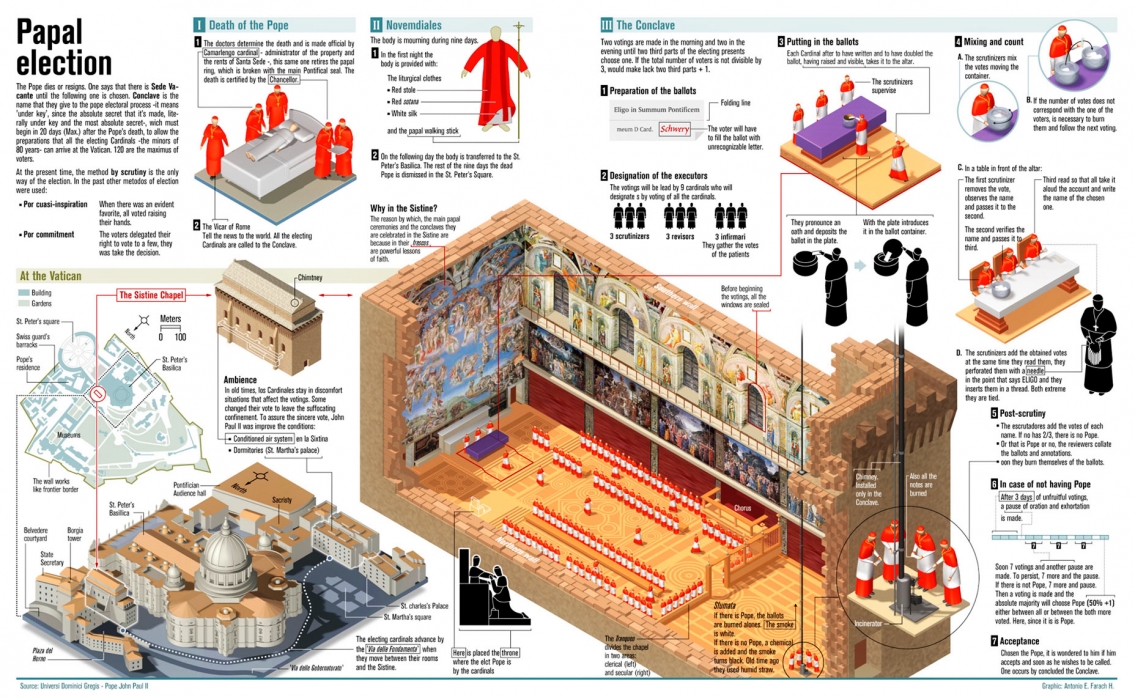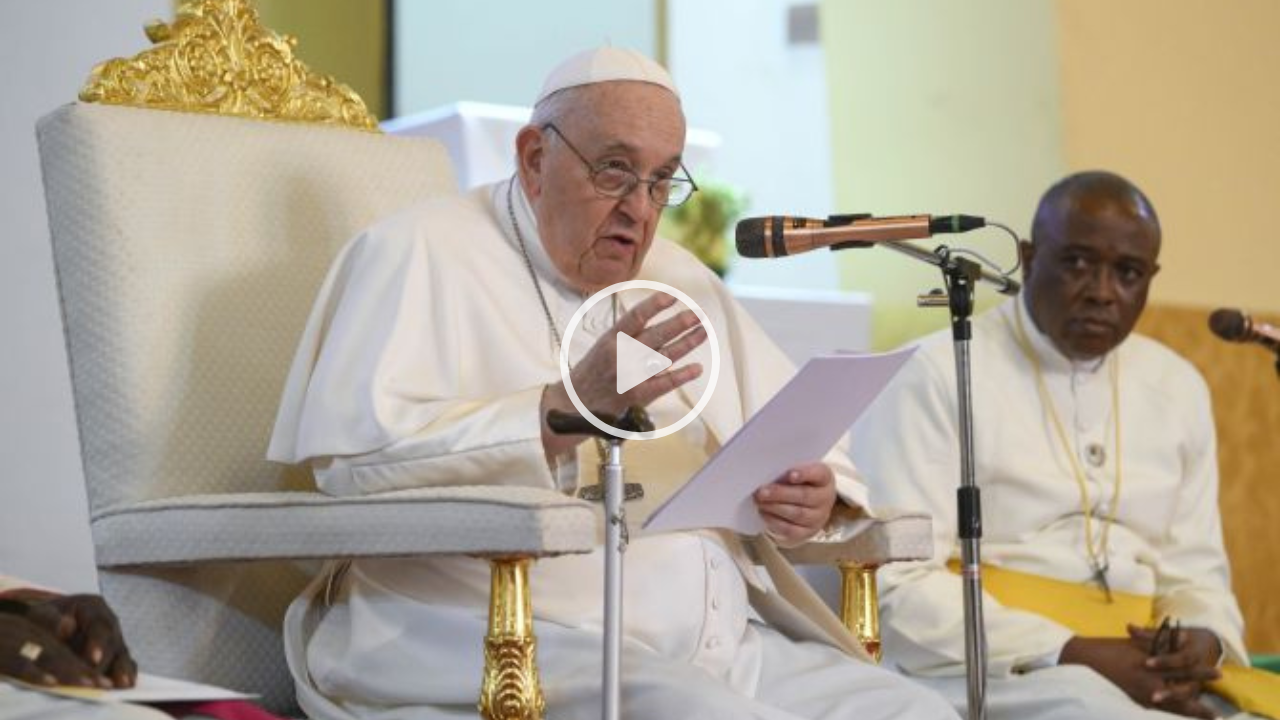How Is A New Pope Chosen? A Comprehensive Guide To Papal Conclaves

Table of Contents
The Death or Resignation of a Pope
The process begins with the death or resignation of the reigning Pope. The official declaration is crucial, initiating a chain of events leading to the Papal Conclave. The College of Cardinals, the body responsible for electing the new Pope, plays a pivotal role in this initial phase.
- Confirmation of the Pope's death/resignation: The death of a Pope is officially confirmed by the Camerlengo (Chamberlain), a high-ranking Cardinal. A Pope's resignation, a relatively recent development, requires a formal declaration.
- Announcement to the world: The news is then officially announced to the world, often from the balcony of St. Peter's Basilica, initiating a period of mourning and preparation for the upcoming conclave.
- Preparation for the conclave: This involves a series of meetings amongst the Cardinals to establish the date and logistics for the conclave, ensuring a smooth and orderly transition.
The Role of the College of Cardinals
The College of Cardinals is the body responsible for electing the new Pope. It's composed of two main groups: Cardinal electors and non-elector Cardinals. Only Cardinal electors, those under 80 years of age at the time of the Pope's death or resignation, are eligible to participate in the Papal Conclave.
- Eligibility criteria for Cardinal electors: The key criterion is age; only Cardinals under 80 are eligible to vote. This ensures a balance between experience and vigor.
- Their role in the pre-conclave meetings: Before the conclave begins, the Cardinal electors meet to discuss logistical arrangements and address any procedural questions.
- Their seclusion during the conclave: Once the conclave commences, the Cardinal electors are completely isolated from the outside world, ensuring the sanctity and secrecy of the election process. This seclusion is a key element of the Papal Conclave tradition.
The Papal Conclave: Location and Procedures
The Papal Conclave traditionally takes place within the Sistine Chapel in Vatican City. This iconic location adds to the historical weight and significance of the event. The procedures are governed by strict rules designed to ensure secrecy and impartiality.
- Seclusion and security measures: The Cardinals remain in complete seclusion within the confines of the Vatican, with strict security measures in place to prevent outside influence.
- Daily routines and voting procedures (scrutiny): The daily routine involves prayer, discussion, and, of course, the voting process (scrutiny). Ballots are meticulously prepared and cast in a highly regulated manner.
- The significance of the two-thirds majority vote requirement: A two-thirds majority is required to elect a new Pope. This ensures broad consensus within the College of Cardinals. The requirement reflects the importance of a united Church.
The Election Process: Scrutiny and Balloting
The voting process itself is meticulously documented and highly secret. Each Cardinal writes their choice on a ballot, which is then burned.
- The secrecy surrounding the voting process: Absolute secrecy is maintained throughout the process. This is crucial to ensure each Cardinal feels free to vote according to their conscience.
- The role of the scrutineers: Special Cardinals, known as scrutineers, count the votes. Their role is vital in maintaining transparency and ensuring the accuracy of the count.
- The significance of the black smoke (signifying no election): Black smoke from the Sistine Chapel chimney signals that no candidate has achieved the required two-thirds majority. White smoke indicates a successful election. The color of the smoke itself has become a highly anticipated symbol for global audiences.
Announcing the New Pope (Habemus Papam!):
The election of a new Pope is dramatically announced from the balcony of St. Peter's Basilica. The words "Habemus Papam!" ("We have a Pope!") resonate globally.
- The new Pope's first appearance to the public: The newly elected Pope appears on the balcony to greet the assembled crowd and the world.
- The selection of a papal name: The new Pope then announces his chosen papal name, a significant symbolic act.
- The beginning of the new pontificate: The announcement marks the beginning of a new papacy, a period of leadership within the Catholic Church.
Conclusion
The process of choosing a new Pope through a Papal Conclave is a complex and highly significant event. From the initial announcement of a vacancy to the final declaration of "Habemus Papam!", each step is steeped in tradition, ritual, and profound religious meaning. Understanding the Papal Conclave process offers invaluable insight into the governance of the Catholic Church and its global impact. To deepen your understanding of this fascinating and historically significant process, delve deeper into the history of Papal Conclaves and the evolving procedures surrounding the election of a new Pope. Learn more about the intricacies of the Papal election process and explore the rich history of Papal Conclaves.

Featured Posts
-
 The End Of An Era Pope Francis And His Impact On The Catholic Church
Apr 22, 2025
The End Of An Era Pope Francis And His Impact On The Catholic Church
Apr 22, 2025 -
 Saudi Aramco Invests In Electric Vehicle Future With Byd Partnership
Apr 22, 2025
Saudi Aramco Invests In Electric Vehicle Future With Byd Partnership
Apr 22, 2025 -
 Fsu Security Flaw And The Heightened Student Anxiety A Case Study In Rapid Response And Lingering Fear
Apr 22, 2025
Fsu Security Flaw And The Heightened Student Anxiety A Case Study In Rapid Response And Lingering Fear
Apr 22, 2025 -
 Live Stock Market Updates Dow Futures Drop Dollar Slides On Trade Worries
Apr 22, 2025
Live Stock Market Updates Dow Futures Drop Dollar Slides On Trade Worries
Apr 22, 2025 -
 The Future Of Luxury Cars In China Perspectives From Bmw And Porsches Experiences
Apr 22, 2025
The Future Of Luxury Cars In China Perspectives From Bmw And Porsches Experiences
Apr 22, 2025
